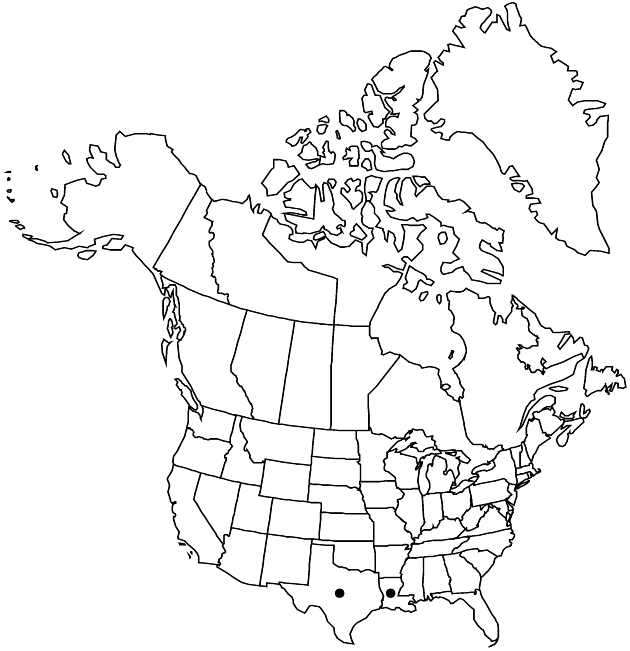Liatris tenuis
SouthW. Naturalist 4: 208. 1959.
Plants 30–55 cm. Corms globose to subglobose. Stems strigoso-puberulent. Leaves: basal and proximal cauline 1 (–3) -nerved, linear-lanceolate to linear-oblanceolate, 120–250 × 2–3 (–5) mm, abruptly reduced on distal 1/2–2/3 of stems, sparsely pilose (abaxial faces), glanddotted. Heads in loose, spiciform arrays (internodes 1–15 mm). Peduncles 0 or 1–5 mm. Involucres cylindro-campanulate, 10–13 × 5–6 (–7) mm. Phyllaries in 3–4 (–5) series, outermost narrowly triangular, unequal, sparsely fine-pilose to glabrate, margins without hyaline borders, ciliate, apices (loosely divergent) acute to acuminate (innermost sometimes obtuse and short-acuminate). Florets 10–12; corolla-tubes glabrous inside. Cypselae 4.2–4.5 mm; pappi: lengths equaling corollas, bristles barbellate or proximally plumose.
Phenology: Flowering (Jun–)Jul–Sep.
Habitat: Longleaf pine savannas, pine-hardwood edges, slopes, flats, uplands, near drainages, sands, sandy clays, fencerows, roadsides
Elevation: 50–100 m
Discussion
Liatris tenuis is in the Center for Plant Conservation’s National Collection of Endangered Plants.
Selected References
None.
Lower Taxa
"barbellate" is not a number."fine" is not a number.
